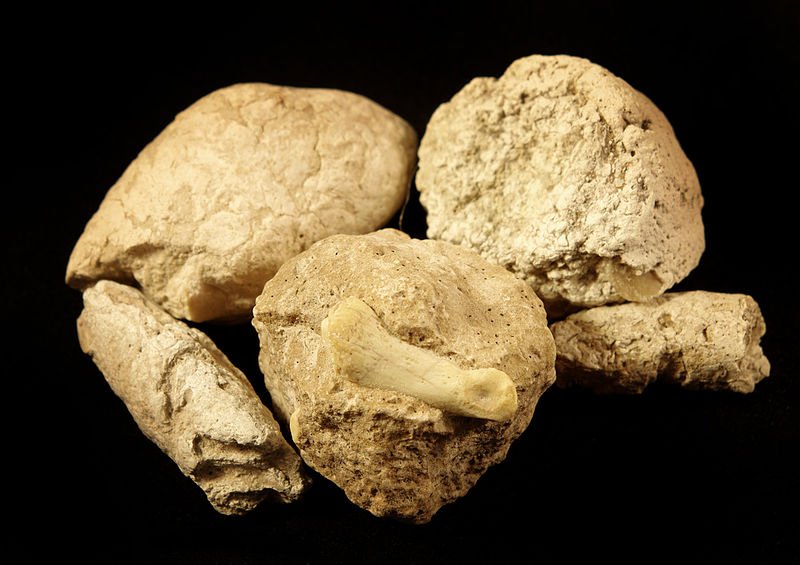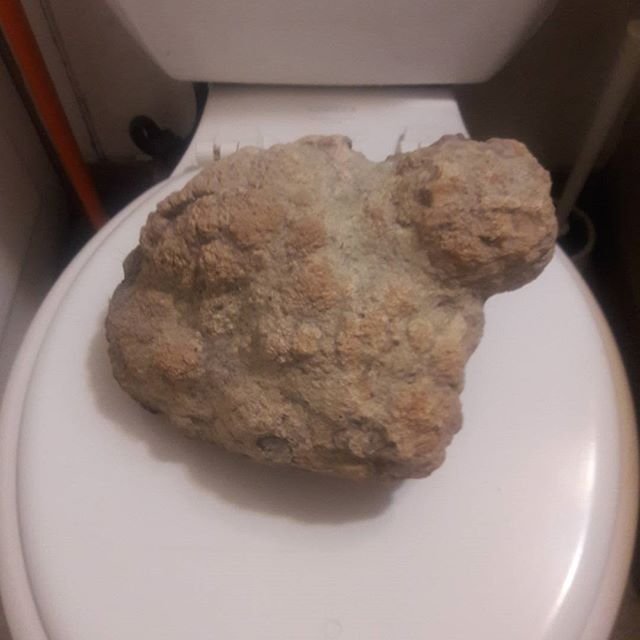Coprolites are, quite simply, fossilized poops. They come in sizes from sub-millimetre termite turds to nearly foot long dinosaur deuces. Despite their lifelike appearance, coprolites are very much just rock- they smell and feel entirely like stone, not poop. Coprolites have been recognized and researched since 1824, when the famed fossil hunter Mary Anning connected the dots and realized that the "bezoar stones" found in the stomachs of some fossils were likely fossilized poop.

Precious the Coprolite is the largest known coprolite, likely from a crocodilian 5-23 million years ago. [Image source]
Despite their gross provenance, coprolites are excellent tools for learning about the past. Information about diet, habitat, whether the animal was a herbivore or carnivore, and even information about the ecology they lived in. It can be hard to precisely identify what produced the coprolite at times, but when that information is available, it can tell us a lot- icythyosaurs, for instance, most likely had spiral ridged intestines similar to present day sharks.
Though coprolites are classically thought of as dinosaur poops, it can be from any animal- hominid coprolites have been found, as well as the aforementioned termite poops.

Note the fossil deer toe bone in this coprolite. [Image source]
Research isn't the only use to which coprolites are put- they're often used for decorative purposes as well. One geologist in days past covered his desk in fossilized coprolite slices! They were also once targeted as a source of phosphate, needed for fertilizers and explosives, among other things. This use largely ended by the 1880s, except for a brief resurgence during the First World War- other sources of phosphate completely replaced it in time, however.
Like other fossils, coprolites have to be buried in sediments rather quickly to prevent excessive decay- in fact, it's even more of an urgent concern for coprolites than for normal fossils, considering the speed at which they do decay. Coprolites have been found as far back as the Cambrian in age as well. They're not the only bodily waste products preserved in the fossil record, though. Urolites, fossilized urinary structures (usually urine related erosional processes) have been found, as well as reguritalites (fossil vomit). They all fit under the larger category of bromalites. Also, somewhat more disgustingly, signs of aborted coprophagy have been found- that is to say, coprolites with bite marks in them where something tried a taste and found it not to their liking.
I'll leave you with one more coprolite- not the prettiest one in the world, but my personal favorite, since it's a part of my rock collection.

My personal coprolite, a birthday gift from my younger brother. This coprolite was produced by a carnivorous dinosaur from the Jurassic, probably female. There's a urolite structure on it as well- the dinosaur peed on its feces, which is how we know it was probably female. Found in the Morrison formation, the richest dinosaur fossil beds in America, where Dinosaur National Park is located today.
********************************************************************
Bibliography:
https://en.wikipedia.org/wiki/Coprolite
https://en.wikipedia.org/wiki/Bromalite
https://en.wikipedia.org/wiki/Urolite
My geology education.
http://www.poozeum.com/records.html
http://www.poozeum.com/poop-s-past.html
Thanks to @trumpman for suggesting coprolites as a topic!
